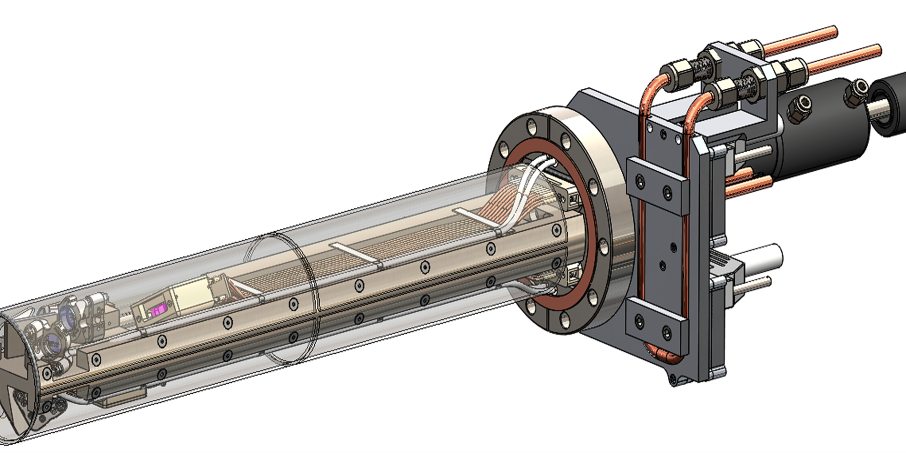Creating heat from fusion reactions requires carefully manipulating the properties of plasma, the electrically charged fourth state of matter that makes up 99% of the visible universe. Now, scientists at the U.S. Department of Energy’s (DOE’s) Princeton Plasma Physics Laboratory (PPPL) have finished building a new plasma measurement instrument, or diagnostic, that could aid the effort to boost the heat of fusion reactions in facilities known as tokamaks and potentially improve the power output of future fusion power plants.
Known as ALPACA, the diagnostic observes light emitted by a halo of neutral atoms surrounding the plasma inside DIII-D, a doughnut-shaped device known as a tokamak operated for the DOE by General Atomics in San Diego. By studying this light, scientists can glean information about the neutral atoms’ density that could help them keep the plasma hot and increase the amount of power generated by fusion reactions. Scientists around the world are trying to harness on Earth the fusion reactions that power the stars to generate electricity without producing greenhouse gases or long-lived radioactive waste.
ALPACA helps scientists study a process known as fueling. During this process, clouds of neutral atoms of varying densities around the plasma break apart into electrons and ions and enter the plasma. “We’re interested in fueling because neutral atom density can increase plasma particle density, and plasma density affects the number of fusion reactions,” said Laszlo Horvath, a PPPL physicist stationed at DIII-D who helped coordinate ALPACA’s assembly and installation. “If we can increase the plasma’s density, then we can have more fusion reactions, which generate more fusion power. That’s exactly what we want to have in future fusion power plants.”


